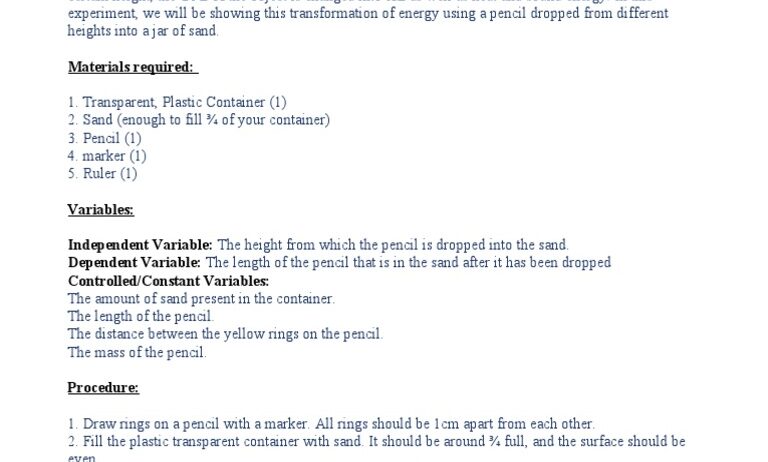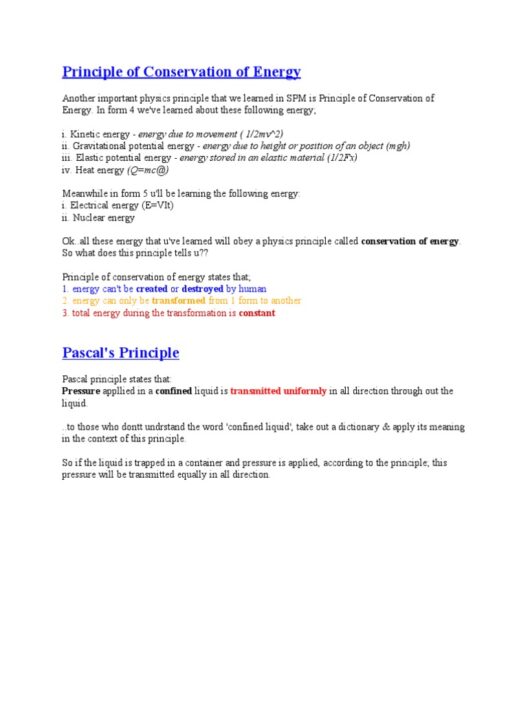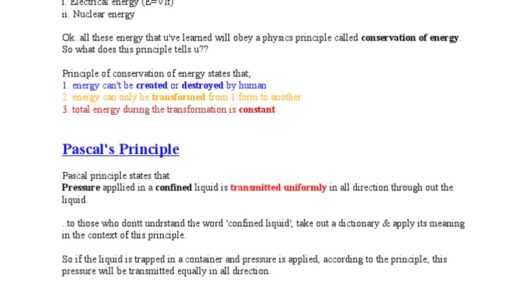In the realm of physics, the Law of Conservation of Energy stands as a fundamental principle that elucidates the unchanging nature of energy within isolated systems. This law asserts that energy cannot be created or destroyed; rather, it transforms from one form to another. Understanding this cornerstone of science not only provides insights into physical processes but also highlights critical implications for environmental sustainability and technological advancement.
The essence of the law can be traced back to classical mechanics, where Thomas Young and other luminaries laid the groundwork for modern interpretations. Whether it is kinetic energy from moving objects, potential energy stored in elevated positions, or thermal energy derived from heat, the total energy of a closed system remains constant. This carries profound consequences across various disciplines, from ecology and engineering to economics and climate science.
By unlocking the secrets of the Law of Conservation of Energy, we gain a deeper appreciation of our surroundings and the intricate connections between human activities and the environment.
Understanding Energy Transformation: The Core Concept
The Law of Conservation of Energy primarily emphasizes the transformation of energy rather than its annihilation or generation. This principle operates on the understanding that while energy alters its form—perhaps heat transforming into mechanical work or chemical energy converting to electrical energy—it always adheres to a constant sum total. For example, consider a simple pendulum; as it swings, the energy oscillates between kinetic and potential forms, yet the total energy remains unchanged.
This principle extends into various real-world applications. For instance, in the process of photosynthesis, plants convert sunlight—solar energy—into chemical energy stored in glucose molecules. Here, the conservation of energy is evident as the solar input translates into a biological form that serves as food for diverse ecosystems. Similarly, in geothermal power systems, the earth’s internal heat is harnessed, demonstrating an elegant transformation of energy that aligns with the conservation principle.
Energy Conversion Systems: Emphasizing Efficiency and Sustainability
In advancing technology and addressing climate change, the Law of Conservation of Energy offers a compelling framework for developing energy conversion systems that maximize efficiency. As we transition from fossil fuels to renewable energy sources, understanding how energy conversion processes operate allows for informed decision-making that promotes enhanced sustainability.
Power plants that utilize fossil fuels often face challenges, such as steam loss during energy conversion and emissions that destabilize ecosystems. Efficient technologies, such as combined cycle systems, leverage the conservation principle to extract maximum energy from fuels used. In these systems, the waste heat generated during electricity production is recaptured to produce additional energy, thereby exemplifying effective conservation in practice.
Renewables, such as solar and wind energy, intricately connect to this principle as they harness natural systems for energy generation. For example, solar panels convert sunlight into electrical energy while adhering to the conservation law by ensuring that energy output reflects the energy input. The continuous cycle of energy transformation emphasizes efficiency and highlights how energy sources can be sustainably managed without detriment to the environment.
Environmental Implications: The Interconnectedness of Energy and Ecology
The implications of the Law of Conservation of Energy resonate profoundly within ecological contexts. Ecosystems function as intricate networks where energy transfer maintains balance and facilitates life processes. Producers, consumers, and decomposers rely on the steady flow of energy, with the conservation principle underpinning the interconnected webs of life.
In the face of anthropogenic challenges, such as climate change and deforestation, understanding the unchanging nature of energy can lead to more sustainable practices that protect ecological integrity. For instance, by incorporating conservation principles into resource management, policymakers and environmentalists can establish frameworks that prioritize efficiency and renewable energy solutions, contributing to the resilience and stability of natural habitats.
The significance of this understanding extends beyond environmental governance; it also underscores the urgency of adopting alternative technologies capable of minimizing energy waste. For example, energy-efficient appliances and transportation options provide tangible avenues for reducing energy consumption while adhering to conservation principles.
Conclusion: The Inviolable Nature of Energy
The Law of Conservation of Energy remains an indelible truth that permeates various aspects of life, science, and the environment. It shapes our understanding of energy systems and champions the need for sustainable practices that honor this principle. In an era of escalating energy demands and environmental challenges, recognizing the unchanging nature of energy can serve as a catalyst for innovation and responsible stewardship.
In summary, the exploration of the Law of Conservation of Energy not only enlightens our understanding of natural phenomena but also inspires concerted actions to create a more sustainable future. As we harness the potentials of energy transformation and develop efficient systems, the principle calls on us to be mindful custodians of the planet’s resources. Maintaining a commitment to the conservation of energy is essential for ensuring a harmonious balance between humanity’s needs and the Earth’s capacity to sustain life.








